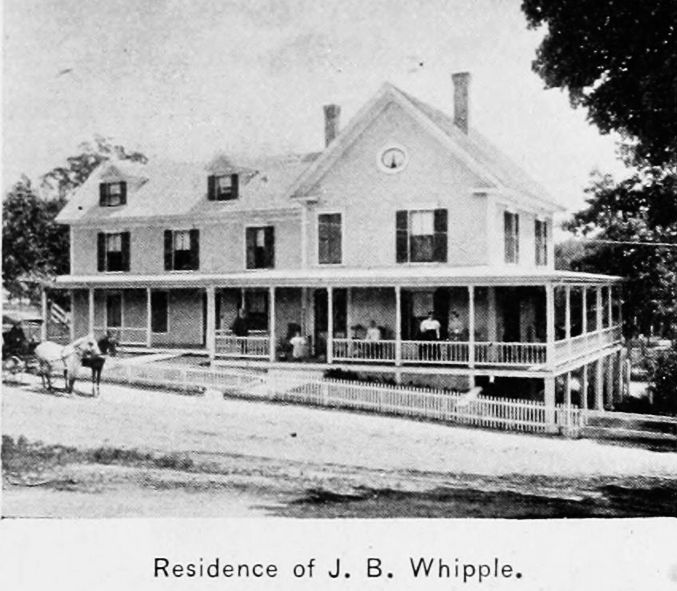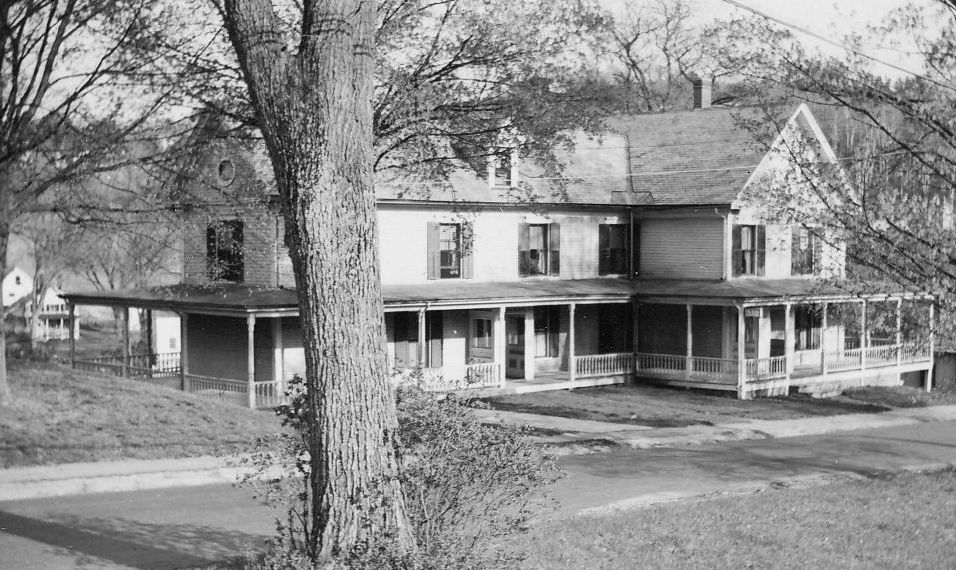New Boston Historical Society
New Boston, New Hampshire

Behind the Door: 16 High Street
by Mary Atai (February 2024)
Reed Whipple and his siblings grew up on High Street. He and his brother James B. Whipple went off to Boston when Reed was 18. Eventually Reed got into the hotel business, becoming so successful that he owned three major Boston hotels, Parker House, Young's Hotel, and the Touraine. James worked for him over the years and gained invaluable experience running topnotch facilities and upscale restaurants.
There had been a pub/inn on the corner of High Street and Central Square since the early 1800s. Henry J. Young had been the owner since at least 1871, calling it the Columbian. By 1893, after he and his brother were successful in bringing the railroad line from Manchester into tiny New Boston, James Whipple decided to buy the Columbian and make it an enticing draw for Bostonians anxious to escape the city and enjoy fresh air and quiet.
Along with the hotel, he bought a total of six acres and the buildings thereon. An interesting tidbit is that Henry Young's father, Ephraim Young, lived in a cottage a little uphill from the hotel on High Street. James needed to remodel the hotel, build a "seawall" along the river, and tear down and replace the stable with a much larger stable. He had Ephraim's little cottage moved down the road so he could begin this work. This "cottage" is the dark barn-red house on Route 13 where Mrs. Gallagher has lived for many, many years.
James remodeled the old hotel from two stories to three, consisting of 50 rooms. He named it the Tavern. It was the best appointed and most expensive place to stay in town at $2.50 per night. Summer boarders flocked there.
James and his wife and daughter moved into the house next to the Tavern, now known as 16 High Street. The house was small, but James enlarged it to accommodate the overflow of summer hotel guests. He also built an impressive wraparound porch, or piazza, as it was called then. (The photo at the top of the page is from the 1897 Granite Monthly.) Part of the porch remains today on the back of the house, and one-half of that length has now been enclosed.
James Whipple died in 1899, and the hotel was put up for auction by his wife, Alice.

16 High Street, early 1900s
By 1962, Thelma and Ernest Neville bought the house. The current living room consisted of two rooms. Thelma made the area in to one large room and added a fireplace. The current kitchen, which is on the left side of the house, used to be a carriage house where the wagons were kept. The center of the house held the kitchen then. One could come through from the carriage house into the kitchen to get warm. There was also an ice pass-through on one wall where blocks of ice were moved through to the pantry for their ice box.
There was one bathroom in the house with a high tank gravity flush toilet and a marble sink. There was a cast iron claw-foot tub so large "that you could learn to swim in it," according to John Neville. He grew up there, along with his four siblings, Michael, Mark, Toni, and Karen, and remembers that their house was the neighborhood hangout for their many friends.
Until the 1840s most houses did not have indoor plumbing, but this house was fortunate to be supplied with water coming from a spring at the top of Valley View Lane. The house had a cistern in the attic, as well as one in the basement, storing the spring water for the family's daily use. This unusual convenience was certainly due to the Whipple family.
When Mary and Lou Lanzillotti bought the house from the Nevilles in 1980, they replaced part of the cellar and the foundation and completely remodeled the kitchen. They have made many changes in the past 43 years.
Following in the footsteps of James Whipple, the Lanzillottis have also recently bought what remains of the Tavern Hotel, the stable that was turned into a bank, coming full circle.
Click here to return to the main page for "Behind the Door" articles.
